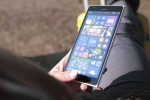One of the earliest devices connected to the Internet was a Coke machine: a beverage dispenser in Carnegie Mellon University’s computer science department offices.
That was back in 1982.
Factoring in the Coke machine, the newfangled term “Internet of Things” should be dated back more than 30 years. Sure, most software developers today are probably focusing on software that runs on computers: servers, desktops, tablets, phones. Increasingly, however, the software we write will either be running on Internet-connected embedded systems, or be communicated with specialized devices.
(How the Internet of Things is growing)
My home has some of those devices. Yours may too. A Nest thermostat. A Pebble smartwatch. A webcam. A LIFX light bulb. Wearables. Automotive telematics. In offices, factories and public spaces, we have inventory control and more.
Whether those devices are connected directly to the Internet via WiFi or cellular links, or through bridge devices using Bluetooth or NFC (near field communications), it doesn’t matter. It also doesn’t matter how we define the Internet of Things. It’s happening. It’s happening today. Are you ahead of the curve?
If you’re not up on the Internet of Things, one place to start is through reading a free report, “THINGS–Internet of Business Opportunities,” by VINT, a research lab operated by Sogeti USA. As the report predicts:
In technological terms, we know where we are going: at least 50 billion connected devices in 2020, 5 billion people and 1 billion locations. In the meantime, Ericsson, McKinsey, Cisco, IBM, Bosch, the Fraunhofer Institute, Advanced Risk Machines, General Electric, Harbor Research and others vie enthusiastically with one another with regard to the impact of intelligent, digital things: in economic sectors, in sector-transgressing domains, and in trans-sectorial innovation.
The focus of this particular report is on the potential of interconnected devices to reduce waste. That’s one huge opportunity. Other opportunities can be found in fields as diverse as gaming, healthcare and communications.
Take, for example, the UP system of wearables from Jawbone. The wristband’s latest software, called UP 3.0, covers everything from monitoring sleep patterns to helping customers manage their daily exercise goals—and sends it to a smartphone.
(Big Data’s role in the Internet of Things)
As developers have access to more and more Internet of Things devices, such as the UP wristband or Arduino-based wearables, the sky is the limit. We’ve come a long way from checking the Coke machine’s inventory in 1982. You can learn more about the trend at Wearables DevCon, coming to San Francisco on March 5-7, 2014.
Do you focus on the Internet of Things? Write me at alan@camdenassociates.com.
Alan Zeichick, founding editor of SD Times, is principal analyst of Camden Associates.






